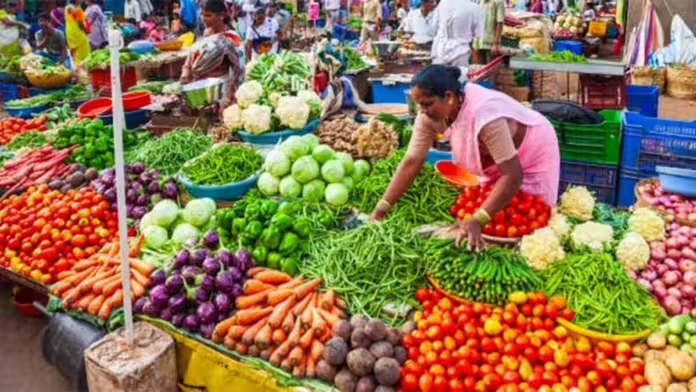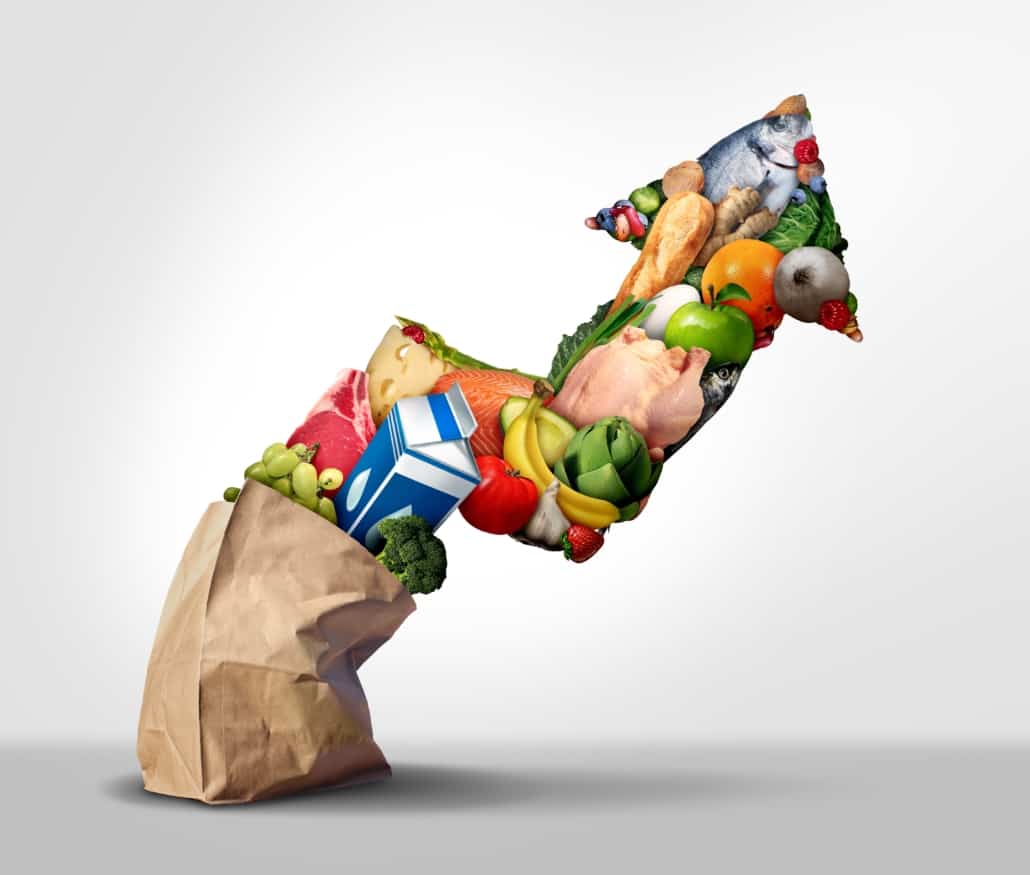
Inflation continues to be a dominant issue in many households, as seen in India’s retail inflation data for September 2024. With inflation accelerating to 5.5% from 3.65% in August, the rise in food prices, especially vegetables like potatoes, onions, and tomatoes, is putting a significant strain on household budgets. The surge in prices of these staple items reflects a broader inflationary trend that affects not just families, but also the overall economy. In this article, we’ll delve into the reasons behind the rising inflation and explore why it disproportionately impacts vegetables and other essential items.
Inflation Impact on Vegetable Prices: A 36% Year-on-Year Spike
The most significant inflationary pressure has been seen in vegetables, which recorded a staggering 35.99% year-on-year price increase in September, compared to 10.7% in August. The price rise has been particularly sharp for staple vegetables such as potatoes, onions, and tomatoes. But why do these items see such rapid price increases when inflation spikes?
One of the primary reasons is the nature of vegetable supply chains. Vegetables are perishable goods, meaning any disruption in the supply chain—whether due to adverse weather, logistical challenges, or fuel price hikes—immediately leads to price increases. The perishable nature of these products makes them more vulnerable to inflation, as short-term supply shortages can have a dramatic effect on prices.

Inflation and Supply Disruptions: The Role of Weather
Weather plays a crucial role in determining the supply of vegetables, and in recent months, irregular monsoon rains have exacerbated the situation. The price of onions, for example, saw a spike due to disruptions caused by heavy rainfall, which affected the harvest season. On the other hand, while the prices of potatoes and tomatoes saw some relief, they are still significantly higher than last year.
Weather-related disruptions not only reduce supply but also increase transportation costs, as fuel becomes more expensive due to inflation. As fuel prices rise, the cost of transporting goods from farms to markets also increases, which in turn drives up the retail price of these essential vegetables.
Inflation and Import Duties: The Case of Edible Oils
In addition to vegetables, edible oils have seen a price hike due to higher import duties. The impact of inflation on imported goods is often magnified by government policies that aim to protect local industries. However, in the case of essential food items like edible oils, these policies can exacerbate the inflationary pressures faced by consumers.
When import duties rise, the cost of production increases, and manufacturers pass these costs on to consumers. As a result, items like garlic and edible oils saw price hikes of over 70% on an annual basis, further squeezing household budgets. Inflation not only impacts domestic products but also imported items, especially when global commodity prices are high.

Seasonal Trends and Inflation: Why Vegetable Prices Fluctuate
Vegetables like carrots, brinjal, and spinach also saw a significant rise in prices, with inflation for these items topping 20%. This across-the-board increase in vegetable prices can be partially attributed to seasonal trends. Different vegetables grow during different seasons, and any disruption in a particular season’s harvest—whether due to climate issues or market disruptions—affects the overall supply.
When certain vegetables are out of season or experience a poor harvest, their prices tend to skyrocket. Inflation, in these cases, compounds the problem by increasing the costs associated with the production, transportation, and storage of these goods.
Inflation in Utility Prices: The Case of Electricity
While food prices dominate the inflation conversation, the cost of utilities, such as electricity, also plays a major role in driving overall inflation. In September, electricity inflation eased slightly, but its impact on household budgets remained notable. Utility costs are heavily influenced by the price of fuel and other raw materials required for energy production.
When fuel prices rise due to inflation, energy providers pass the increased costs on to consumers. This dynamic creates a ripple effect, as higher utility prices reduce disposable income and increase the overall cost of living, leaving less room in household budgets for other essentials like food.

Inflation’s Effect on Mobile Tariffs and Luxury Goods
Inflation’s reach extends beyond essential goods to luxuries and services as well. Mobile tariffs, for instance, rose by 10.3% in September, reflecting the increased cost of providing telecommunication services. The rising price of mobile data further demonstrates how inflation can affect every facet of modern life, from basic needs like food to technological services that are now considered essential.
Luxury items such as gold and silver also saw a price increase of 20% year-on-year, showcasing how inflation even impacts non-essential goods. While these items may not directly affect daily life, they indicate how inflation drives up the cost of goods across all sectors of the economy.
Can Inflation Ease in the Coming Months?
According to a research note by Kaushik Das, Chief India Economist at Deutsche Bank, the outlook for inflation may improve later in the year. His nowcasting exercise predicts that vegetable prices will remain high in October due to residual effects of the monsoon. However, as the weather stabilizes and supply chains adjust, inflation may start to ease from November onwards.
Better monsoon rains this year compared to previous years are expected to alleviate some price pressures on vegetables. While inflation will likely remain a concern, there is hope that the situation will improve as the supply of vegetables returns to normal levels.
Conclusion: Inflation’s Widespread Impact on Household Budgets
Inflation continues to hurt household budgets, especially when it comes to essential items like vegetables, edible oils, and utilities. The sharp rise in the prices of potatoes, onions, and tomatoes demonstrates how inflation can disproportionately affect perishable goods, particularly when supply chains are disrupted by weather, import duties, and logistical challenges.
While the outlook for the coming months suggests that inflation may ease as vegetable prices stabilize, the immediate impact on families across India is undeniable. As inflation continues to shape the cost of living, households will need to adapt to higher prices in the short term, while policymakers work to address the root causes of these price hikes.
